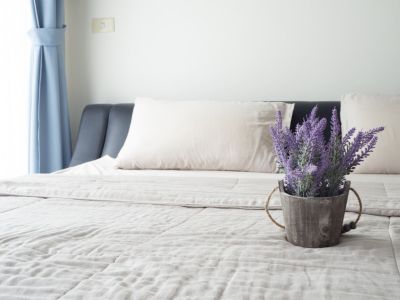Indoor plants that smell good will also give gardeners something green to tend to while awaiting the spring planting season.
What are Some Indoor Plants That Smell Good?
There are a number of fragrant indoor plants that can be grown by the frustrated gardener. The gardenia is an extremely popular choice when growing aromatic houseplants. Gardenias have an intense, sweet aroma with dark green, glossy leaves and stunning white flowers. This beauty can be a bit difficult to grow indoors due to its high humidity, bright light and warm daytime temperature requirements with cool nights of 55-60 F. (13-16 C.). Additionally, this fragrant houseplant can grow quite large, up to 6 to 8 feet (1.8 to 2.4 m.) tall. Caring for this aromatic plant indoors may not be the best choice for those who will not pamper it. Scented geraniums are also a popular option for fragrant indoor plants. Caring for this aromatic plant indoors is a bit simpler than the gardenia. Geraniums have a wide range of scents from lemon, peppermint, chocolate, orange, lavender, rose and even pineapple. The fragrance of scented geraniums comes not from the blooms, but from the foliage and as a result is fairly weak. Scented geraniums need well-draining soil and cool temps of between 55-68 F. (13-20 C.). Allow the plant to dry between watering and fertilize once a month during the winter months. Then, move the plant outside as temps warm to blossom.
Additional Fragrant Houseplants
The above houseplants tend to require a bit of TLC, while the following are more adaptable for growing as indoor plants that smell good too. Arabian jasmine (Jasminum sambac) or pink jasmine is a member of the olive family and is an evergreen vine that grows outside in warm climates. It needs high humidity, warm temps and full sunlight. This jasmine has dark green leaves with tiny white flower clusters that pink up as they mature with a sweet aroma. Hoya carnosa or wax plant is another vine with leathery leaves. It is not as picky regarding humidity and temperature but does require bright light. The wax plant can be trained on a trellis or up a wire the better to display its white to pink star-shaped blooms. This is one houseplant that blooms most abundantly when it is root bound and should be allowed to dry between watering. Grape hyacinth is usually seen growing outside, appearing as royal blue flowers which pop up in the early spring. However, these bulbs can be forced to grow in shallow pots indoors. Set the bulbs 3 to 4 inches (7.6 to 10 cm.) deep and an inch or two (2.5 or 5 cm.) apart in an area of between 35-55 F. (2-16 C.) After 10 to 12 weeks of these chilly temps, move the pot to a room temperature location and water daily. Once the plant has blossomed and the foliage has died back, plant the bulbs outside. Paper whites are another aromatic bulb that can be force indoors and is popular during the Christmas holidays. Herbs such as lavender and rosemary are also highly aromatic and work well grown indoors. ‘Sharry Baby,’ an Oncidium orchid, is another indoor plant that smells good. Pansy orchids are another orchid option with a sweet smell and are one of the easier orchids to grow. Caring for either of these aromatic plants indoors will require plenty of sunlight. Other flowering plants to grow as aromatics in the house are string of beads (Senecio roleyanus) and wax flower (Stephanotis floribunda). Both are vining plants that can be planted in hanging baskets or trained on trellises. Most, if not all, of these aromatic plants should be allowed slow growth and rest during the winter by reducing fertilization and water. When caring for aromatic plants indoors during the winter, they should also be situated in a slightly cooler environment. This will encourage more blooms and longer lasting fragrance from these indoor plants that smell good.
